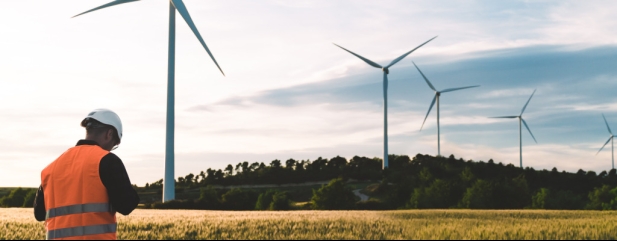Archived article
Please note that tax, investment, pension and ISA rules can change and the information and any views contained in this article may now be inaccurate.
Invest in renewables winner UK Greencoat Wind for a handsome 5.4% dividend yield

The transition to cleaner energy is a long-term trend which will involve significant investment in areas like renewables. UK Greencoat Wind (UKW) is a good way to play this transition while offering a stream of income from dividends which are rising in line with inflation.
The trust generates strong cash flow from its portfolio of onshore and offshore wind farms, reinforced more recently by strong power prices. Often trading at a premium to net asset value, it is currently at a modest discount of 3.3%.
Revenue from operating wind farms in the UK is made of up of several components. The main one is the sale of power produced under long-term agreements to utilities who are obliged by law to purchase a certain percentage of power from green sources.
Since its launch in 2013 Greencoat UK Wind has paid an RPI-linked dividend and it reaffirmed these inflation-busting income credentials in January as it confirmed a 2023 target to increase dividends by 13.4% to 8.76p. That puts the stock on a 5.4% prospective yield.
Dividend cover in 2022 was 3.2 times which leaves surplus cash of £395 million, according to estimates by research group Kepler, which can be reinvested in the portfolio, helping to lay the foundations for further growth in the dividend.
Greencoat has a committed pipeline of acquisitions and the growth opportunity is highlighted by the estimated total value of UK assets in operation, construction or with planning consent of around £90 billion.
Because the dividend is well covered by earnings, the trust can withstand significant downside in wind volumes and power prices in any individual year.
Analysts at Kepler note the managers’ observation that they ‘fixed the roof when the sun was shining’ in 2022. ‘When electricity prices were rising at their fastest rate, they built plenty of conservatism into the net asset value by assuming very significant haircuts to the wholesale electricity prices at which they would sell their energy output. As interest rates started to increase, they raised the discount rate at which they value assets.’
Rising interest rates have led to higher discount rates on long duration assets like renewables infrastructure. Two key elements make up the discount rate – the risk-free rate which is typically taken as the yield on government bonds and the risk premium which is the part which reflects the risk associated with investing your money. The risk-free rate has moved materially higher.
This has already had an impact on the valuation of trusts in this space and we now think it is fully factored in by the market.
Important information:
These articles are provided by Shares magazine which is published by AJ Bell Media, a part of AJ Bell. Shares is not written by AJ Bell.
Shares is provided for your general information and use and is not a personal recommendation to invest. It is not intended to be relied upon by you in making or not making any investment decisions. The investments referred to in these articles will not be suitable for all investors. If in doubt please seek appropriate independent financial advice.
Investors acting on the information in these articles do so at their own risk and AJ Bell Media and its staff do not accept liability for losses suffered by investors as a result of their investment decisions.
Issue contents
Editor's View
Feature
- Revealing the bargain stocks which may have been left behind
- Time to invest in the UK: funds to play a resurgent stock market
- Discover the funds and stocks which pay monthly and quarterly incomes
- The £5 investment challenge. Get on board and invest a little bit more each month
- Emerging markets: a cold winter for China and growth back in favour
- Discover the emerging markets stocks picked out as growth champions
Great Ideas
News
- Big banks fail to live up to the market’s high expectations
- How US retail titans Walmart and Home Depot disappointed investors
- Darktrace calls in EY as it mounts fight against big fraud claims
- Why billionaire Ken Griffin is backing the Boohoo recovery plan
- LADbible owner LBG Media more than doubles after strong trading and broker optimism
- Trainline shares down 30% in six months with recovery derailed by strikes

 magazine
magazine









